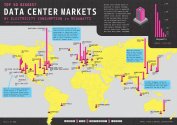You are using an out of date browser. It may not display this or other websites correctly.
You should upgrade or use an alternative browser.
You should upgrade or use an alternative browser.
Artificial Intelligence thread
- Thread starter 9dashline
- Start date
btw I don't say this just farcically.
Most of these independent "analysts" or bloggers make their big money not really by subscription but by selling "consultations" to think tanks or actual nat sec actors. Think the US State Department. Their blog posts are advertisements for their services. This is extremely common and I know for a fact quite of few of the ones discussed in this forum have given policy advice to the US gov on AI or semiconductors.
Which would explain why the US gov policy on tech is so messed up: they are advised by enthusiasts...
This is exactly as I called it two years ago: the US has no hardware, no cap ex. It has already reached the limits of what it can do on software. Only China has the potential to capitalize on AI (bringing AI to the real world with robotics).
Erik Brynjolfsson of Stanford University has said that he expects ai “to power a productivity boom in the coming years”.
For such an economic transformation to take place, companies need to spend big on new software, communications, factories and equipment, enabling ai to slot into their production processes. An investment boom was necessary to allow previous technological breakthroughs, such as or the personal computer, to spread across the economy. From 1992 to 1999 American nonresidential investment jumped by 3% of gdp, for instance, driven in large part by extra spending on computer technologies.
Yet so far there is little sign of an ai splurge. Across the world, capital expenditure by businesses (or “capex”) is remarkably weak.
Surely, with all the excitement about generative ai’s potential, spending on information technologies is at least soaring? Not quite. In the third quarter of 2023 American firms’ investment in “information-processing equipment and software” fell by 0.4% year on year.
Last edited:
following on the path of its competitors, Honor has now unveiled its own Magic LLM as part of Magic OS 8.0
again, similar functionalities and comes with 7 billion parameters
again, similar functionalities and comes with 7 billion parameters
The size by investment crossed USD 29.02 billion in 2022 and is expected to cross USD 34.03 billion by 2028, growing at a CAGR of 2.69% from 2022-2028.
According to Arizton’s latest research report, China has around 59 upcoming data centers, with 1,240 MW power capacity to be added in the next 6 years.
Key Highlights
According to Arizton’s latest research report, China has around 59 upcoming data centers, with 1,240 MW power capacity to be added in the next 6 years.
Key Highlights
- In February 2022, the Government of China announced the approval for developing around 10 national data center clusters, along with establishing eight computing centers to fuel the data center industry growth.
- The government of China has also launched its East-to-West data computing strategy to support the industry's growth in the country's western regions that are underdeveloped or economically weak.
- The country's industrial and commercial deployment of 5G services has been growing significantly. It thus is driving the need for the deployment of edge data centers for low latency connectivity and data transfer, especially in areas with weak connectivity.
- The rapid growth of the data center industry in China has driven the demand for sustainability infrastructure, with initiatives such as achieving carbon neutrality in China by 2060.
- Data center operators in the country have started working to adopt renewable power sources; for instance, Tencent Cloud, a cloud operator, has set the target to run its operations (100%) from renewable energy sources by 2030.
- The government of China has started investing significantly in the growth of computing power and the adoption of advanced technology in the country. For instance, the government has established its New Infrastructure Plan, which targets to support foreign investors in the country through benefits such as lower land prices, lenient real estate, reduced corporate income tax, the exemption in tariffs, and other benefits.
- Global cloud operators such as Microsoft and AWS are establishing their presence in the market by colocating local data centers under the foreign direct investment policy, which allows foreign investors to partner with local firms to enter the market.
read here for Sensetime's 2023 white paper
also here on their effort to get into auto industry smart cars with SenseAuto
also my summary here
note, their current AIDC cluster has 6800 PLFOPS, but only 500 PFLOPS is domestic. While that may sound low, keep in mind that they probably only started to onboard domestic GPUs in 2023, so it will take some time for this % to creep up. They expect to reach 16.5 EFLOPS by next year, so there is a lot of growth and new domestic GPUs they can buy
also here on their effort to get into auto industry smart cars with SenseAuto
also my summary here
note, their current AIDC cluster has 6800 PLFOPS, but only 500 PFLOPS is domestic. While that may sound low, keep in mind that they probably only started to onboard domestic GPUs in 2023, so it will take some time for this % to creep up. They expect to reach 16.5 EFLOPS by next year, so there is a lot of growth and new domestic GPUs they can buy
Shanghai branch of China Telecom is building a new datacenter with 15000 card AI cluster forming > 4.5 EFLOPS of computation and also using a new generation of domestic AI computation production (whatever that means). It will be China's first liquid cooled cluster of 10k+ cards

